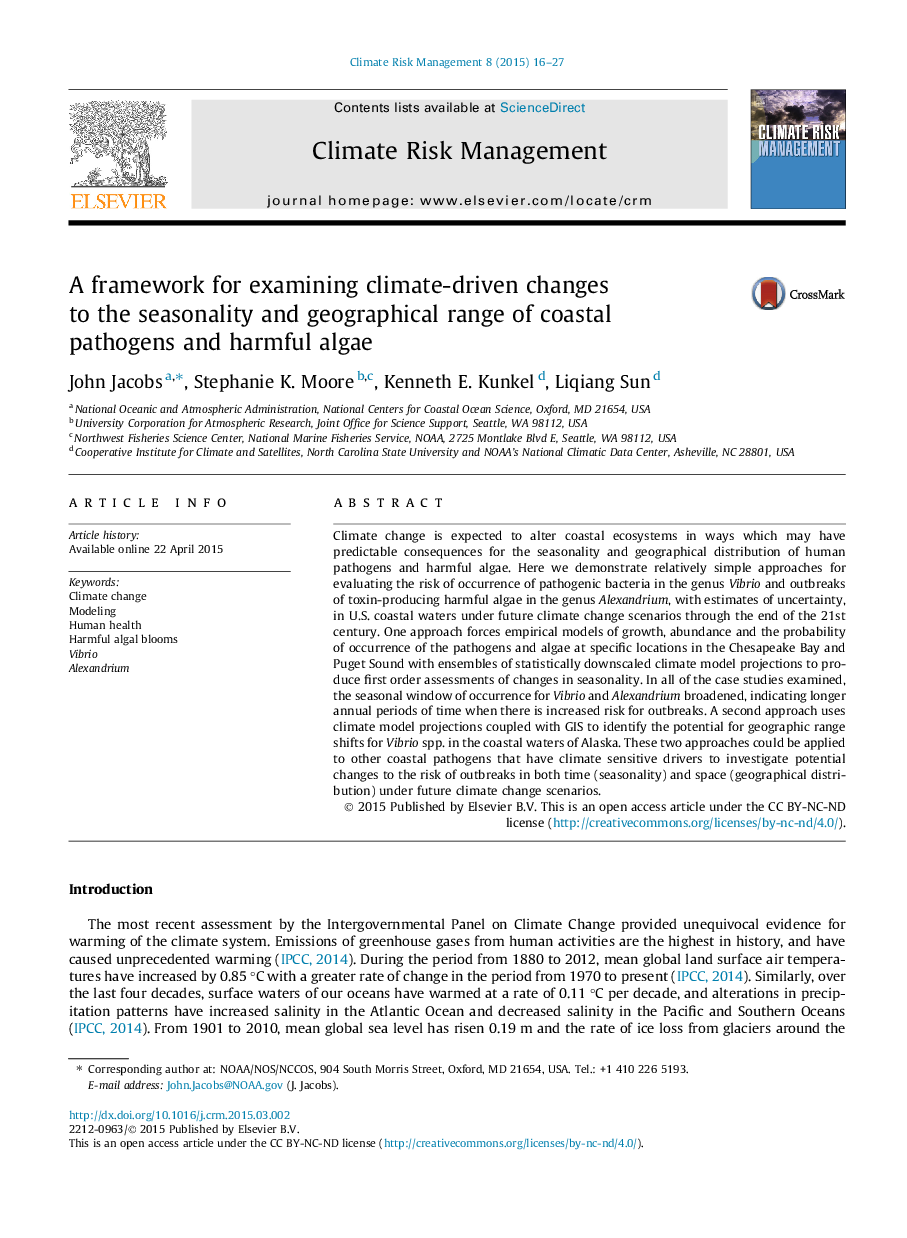| Article ID | Journal | Published Year | Pages | File Type |
|---|---|---|---|---|
| 1051226 | Climate Risk Management | 2015 | 12 Pages |
•Two approaches for evaluating climate change impacts on coastal pathogens are demonstrated.•First shows expansion of the seasonal windows of growth for Vibrio and Alexandrium.•Second identifies the potential for geographic range expansion for Vibrio.
Climate change is expected to alter coastal ecosystems in ways which may have predictable consequences for the seasonality and geographical distribution of human pathogens and harmful algae. Here we demonstrate relatively simple approaches for evaluating the risk of occurrence of pathogenic bacteria in the genus Vibrio and outbreaks of toxin-producing harmful algae in the genus Alexandrium, with estimates of uncertainty, in U.S. coastal waters under future climate change scenarios through the end of the 21st century. One approach forces empirical models of growth, abundance and the probability of occurrence of the pathogens and algae at specific locations in the Chesapeake Bay and Puget Sound with ensembles of statistically downscaled climate model projections to produce first order assessments of changes in seasonality. In all of the case studies examined, the seasonal window of occurrence for Vibrio and Alexandrium broadened, indicating longer annual periods of time when there is increased risk for outbreaks. A second approach uses climate model projections coupled with GIS to identify the potential for geographic range shifts for Vibrio spp. in the coastal waters of Alaska. These two approaches could be applied to other coastal pathogens that have climate sensitive drivers to investigate potential changes to the risk of outbreaks in both time (seasonality) and space (geographical distribution) under future climate change scenarios.
